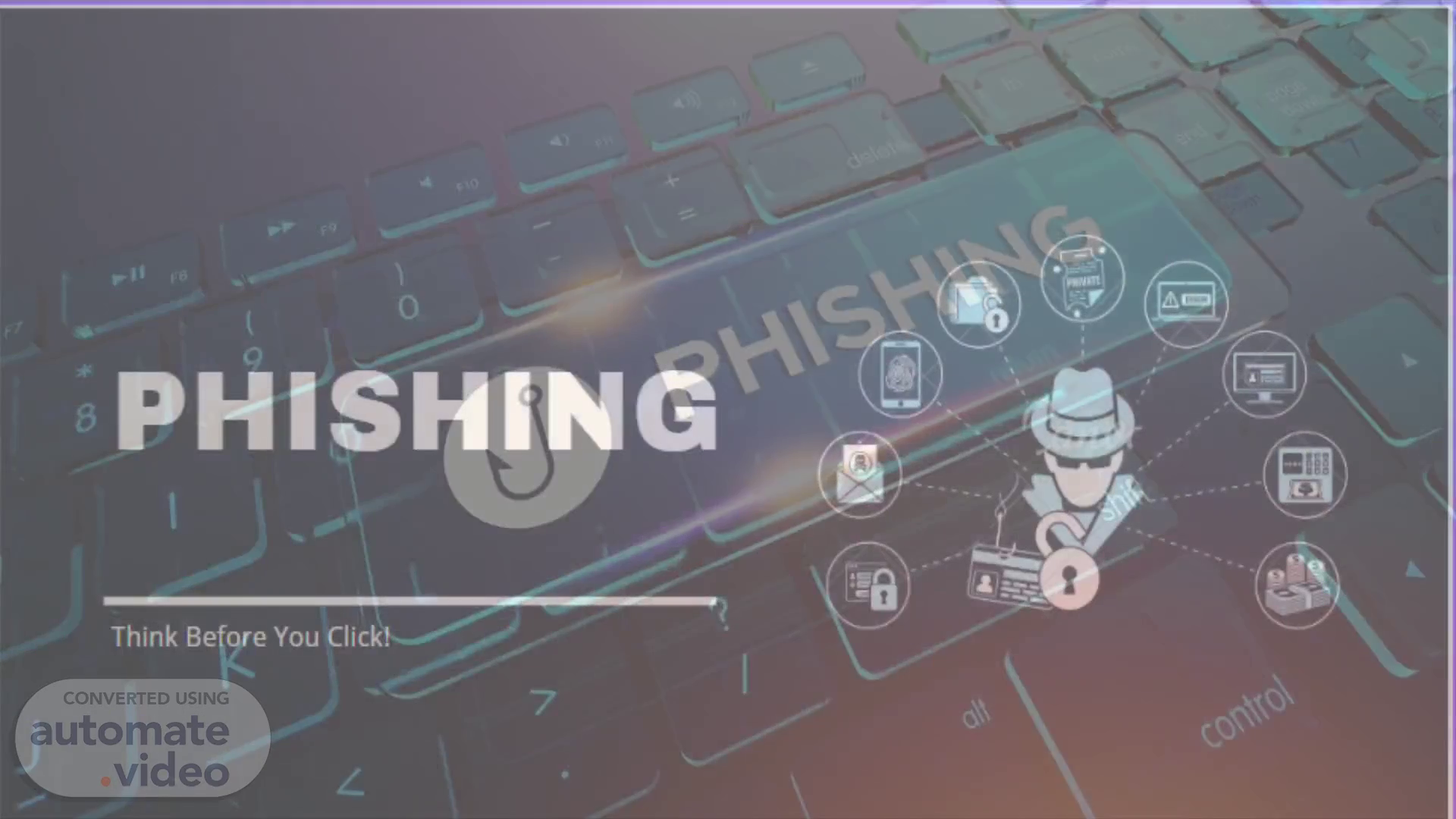
PowerPoint Presentation
Scene 1 (0s)
[Audio] Good morning everyone and welcome here today to discuss the important topic of phishing attacks via social media. Our agenda for the day includes taking a closer look at three of the most common types of phishing attacks and discussing ways to help protect ourselves from these malicious attempts. Let's get started by diving in to phishing attacks..
Scene 2 (21s)
[Audio] Phishing is a serious threat in cyberspace, and essential to be able to identify potential risks. Phishing attacks come in many forms including email, text messages and instant messages. Be wary of messages from unknown senders, or those with strange or suspicious content, such as requests for personal information. Double-check the URL before clicking on any links. Use up-to-date security software, and never respond to any messages asking you to enter sensitive information. Taking a few simple precautions can help protect against phishing attacks..
Scene 3 (1m 1s)
[Audio] Phishing attacks are a serious problem when it comes to online security and it is important to be aware of the risks and take steps to protect yourself. To avoid phishing attacks, verify the sender of any email you receive and do not share any personal information or passwords with anyone online. Utilize anti-phishing tools and security software to help protect you, while also checking the URL when clicking on links or downloading attachments and being cautious of suspicious links or attachments. Furthermore, keeping your software up-to-date and enabling two-factor authentication can also help protect you from these malicious attacks. Make sure to think before you click and stay safe online..
Scene 4 (1m 45s)
[Audio] Spear phishing is a type of attack that targets specific individuals using personalized messages. It requires knowledge of the target, customizing the attack to maximize the likelihood that the recipient will click on a malicious link or open an attachment. Sophistication is often employed in spear phishing, including professional-looking emails, detailed messages, or other forms of persuasion. To protect yourself, be aware of the potential signs of spear phishing and think before you click..
Scene 5 (2m 18s)
[Audio] With the proliferation of phishing attacks, it is crucial to understand the different kinds and how best to protect yourself. Email phishing is the most common, crafted to appear as coming from legitimate sources in order to get hold of personal data. Spear phishing is a tailored attack using existing information about the recipient to generate a legitimate-looking message. Whaling is a similar tactic, aimed at high-profile individuals. To make matters worse, smishing and vishing involve text messages or voice calls to persuade victims to open their accounts. Clone phishing replicates a genuine email or website, and malware-based phishing downloads malware onto the target device. To avoid falling victim, you should be aware of the various techniques used by cybercriminals, and take precautionary measures such as double-checking the origin of emails or links before clicking..
Scene 6 (3m 15s)
[Audio] Verifying the sender of any message before clicking any links or downloading any attachments, never sharing personal information or passwords with anyone online, using anti-phishing tools and security software, being cautious of suspicious links and attachments, keeping your software up-to-date, and enabling two-factor authentication on accounts are essential in protecting oneself from phishing attacks that are becoming increasingly sophisticated. It is important to take these steps in order to create an extra layer of security..
Scene 7 (3m 45s)
[Audio] Phishing attacks are an ever-evolving threat and the three most common are spear phishing, whaling and hacking. Each is designed to steal important personal or corporate data, so it is essential to be aware of them and take preventive measures against them. The best way to protect yourself and your data is to think before clicking on any suspicious emails or links. A thank you page helps create a positive and secure experience for customers after they have completed a purchase. It provides safe messaging, clear instructions and performance optimization, to ensure customers have a pleasant experience when using your site. Thank you for your interest and attention..